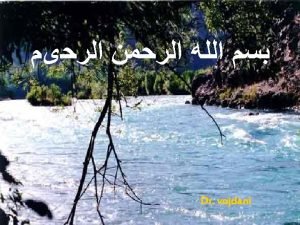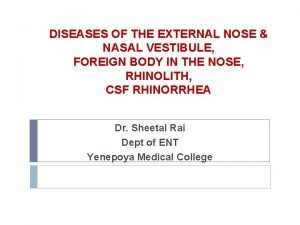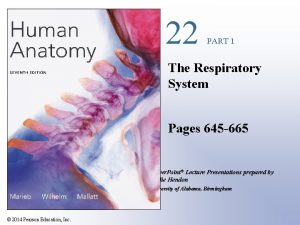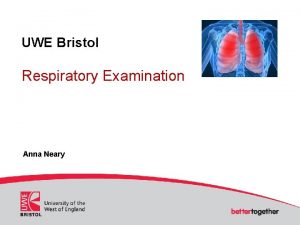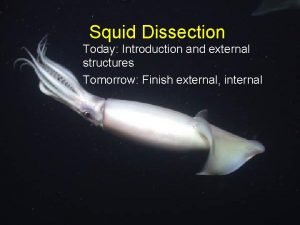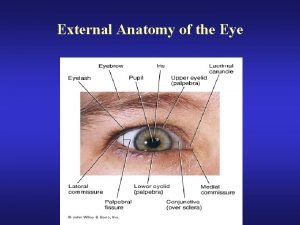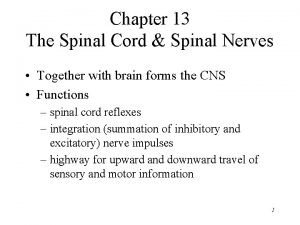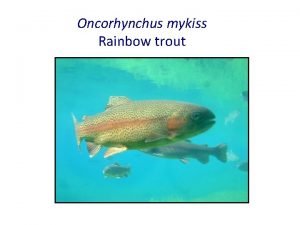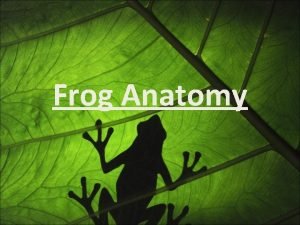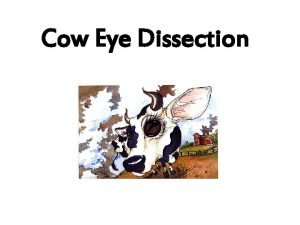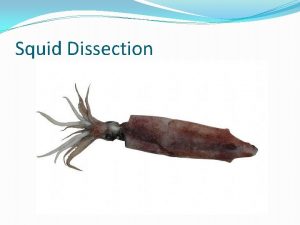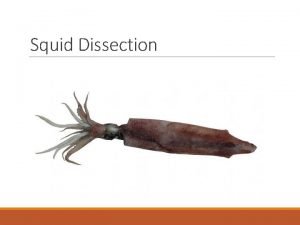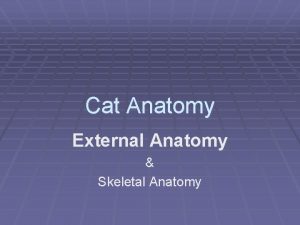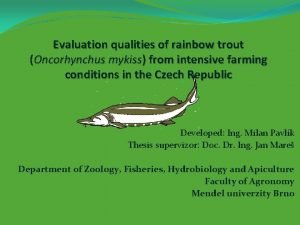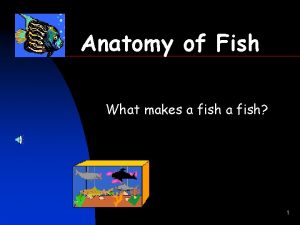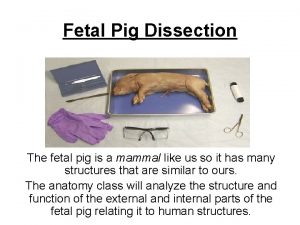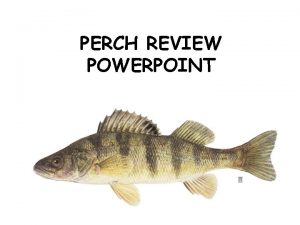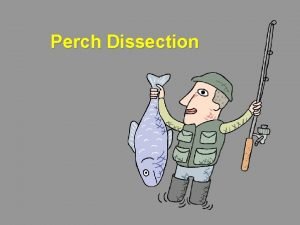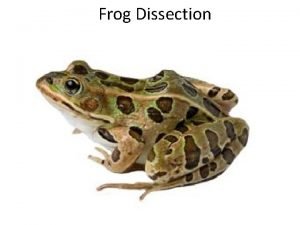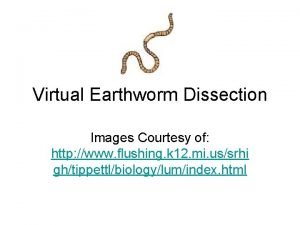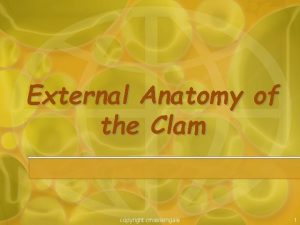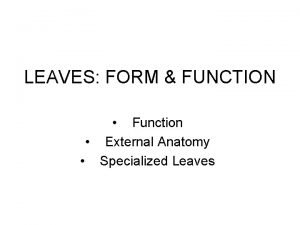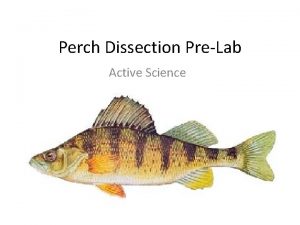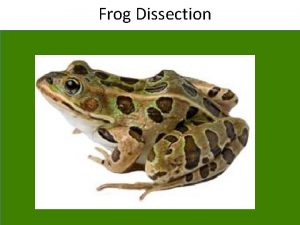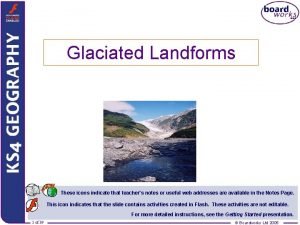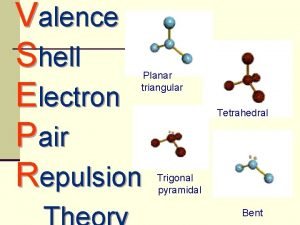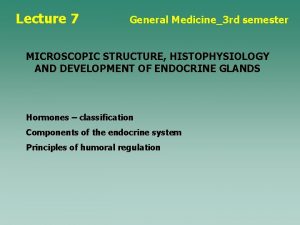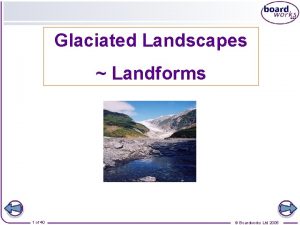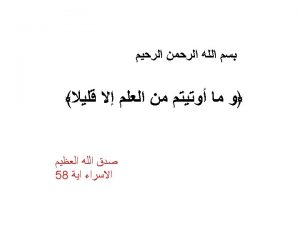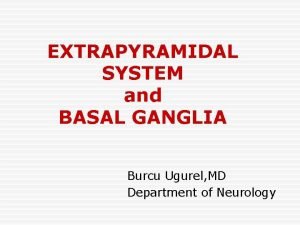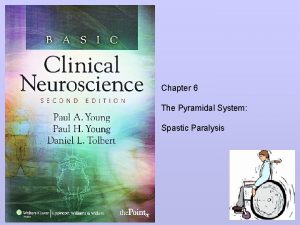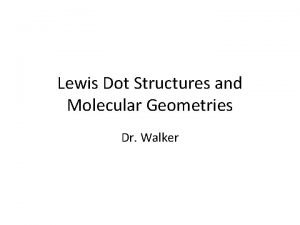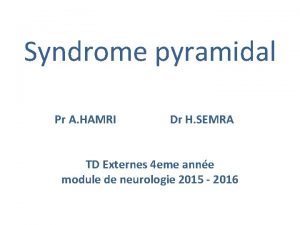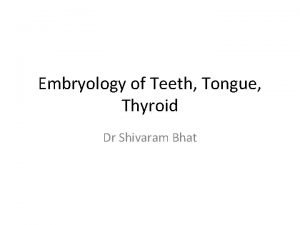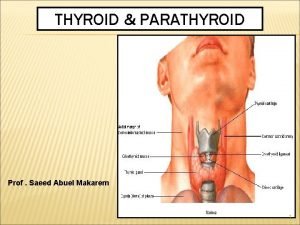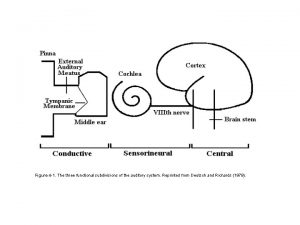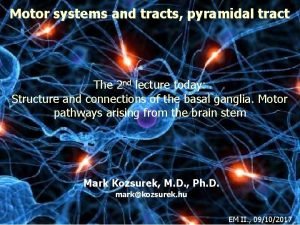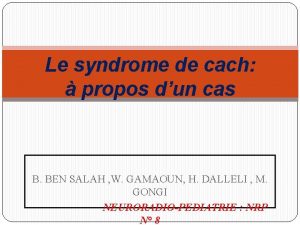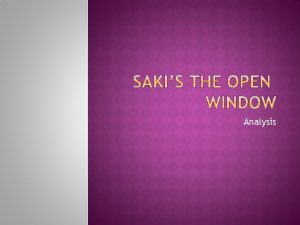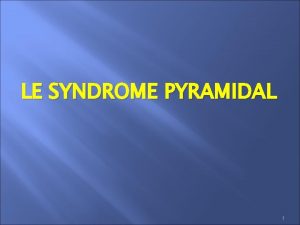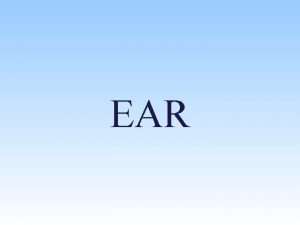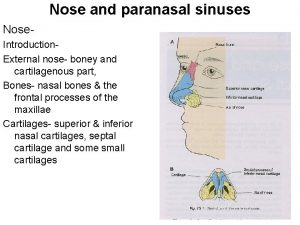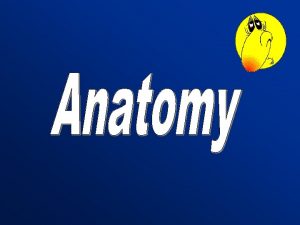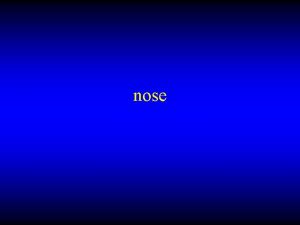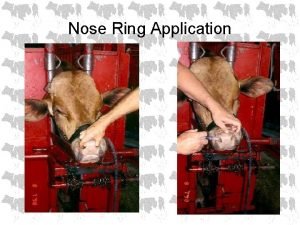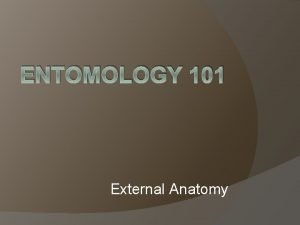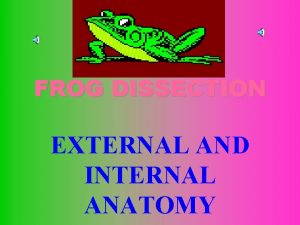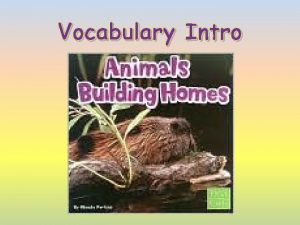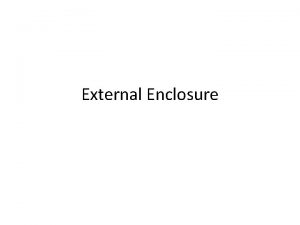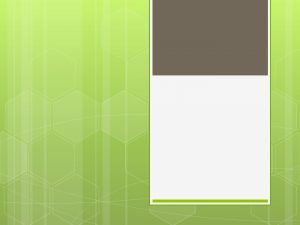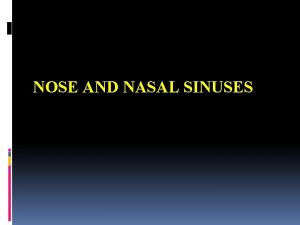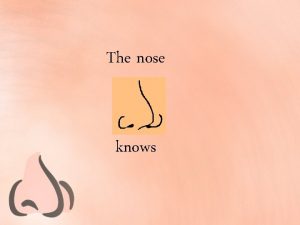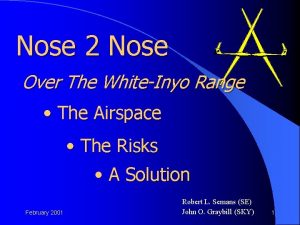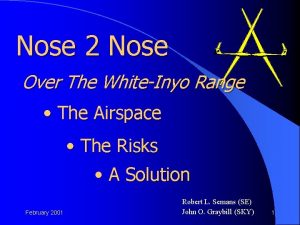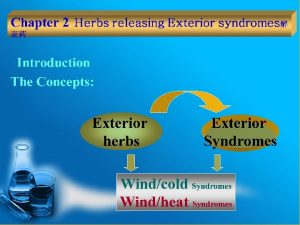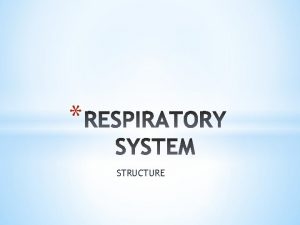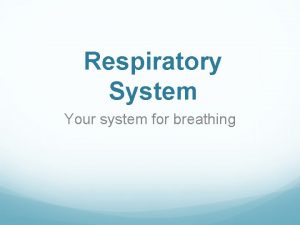ANATOMY OF NOSE External Nose Pyramidal shaped osteocartilagenous

























































- Slides: 57

ANATOMY OF NOSE

External Nose Pyramidal shaped osteocartilagenous framework Root- point where nose continues with forehead Base- directed downwards opens into ant. nares Bridge- where lateral surfaces meet in midline .

Columella- separates the two nares Nasal ala- forms lateral boundary of nose Nasal Tip Dorsum- connects tip to root of nose .


Bony Part q. Paired nasal bones – Upper 1/3 rd of ext. nose – bony - Lower 2/3 rd of ext. nose - cartilaginous - Nasal bones meet in midline forming bridge - Articulate - Superiorly with nasal process of frontal bone - Laterally with frontal Process of maxilla - Inferiorly with upper lateral cartilages.


Cartilaginous Part q. Upper lateral cartilages • Extend from under surface of nasal bones to alar • • cartilage. Articulate with nasal bone & frontal process of maxilla above & lower lat. cartilages below Fuse with each other & septal cartilage in midline Limen nasi-groove between upper & lower lat. cartilages, ( site of intercartilagenous incision) Limen vestibuli (Nasal Valve)– lower free edge of upper lateral cartilage.

q. Lower lateral cartilages- (Alar cartilages) • U shaped cartilages • Medial crus form collumela • Lateral crus (wider) form ala of nose .

q Lesser Alar (Sesamoid ) Cartilages – Two or More in number Lie above and lateral to alar cartilage. Various cartilages are connected with adjoining bones and with one another by perichondrium and periosteum. q Septal cartilage • Supports dorsum of cartilaginous part of nose • Anterosuperior border runs from under nasal bones to nasal tip.





q. Skin over nasal bones & upper lat. Cartilages is thin &mobile while over lower cartilages is thick & adherent & Contains many sebaceous glands. q. Muscles- Procerus Nasalis – Transverse & Alar Ant. & Post. dilator nares Leveator labii superioris alaque nasi Ant. & Post. Dilator nares Ant. & Post. Depressor septi.


q Nasal cavity- Medial Wall Lateral Wall Roof Floor Vestibule- ( Lined by skin) Ant. inf. part of nasal cavity &contains sebaceous gland & vibrissae.

Lateral Nasal Wall- Marked by three turbinates & coresponding meatus Some times a fourth turbinate – Concha suprema may be present q. Formed by. Maxilla – Medial surface, Frontal process, Ethmoidal & lacrimal bones Perpendicular plate of palatine bone Medial pterygoid plate Inferior turbinate Sphenoid.

q. Turbinates • Inferior turbinate : - Separate bone which covers inf. meatus with opening of nasolacrimal duct in ant. Part of meatus - 1 cm behind the posterior end of inf. turbinate, pharyngeal opening of eust. tube is present • Inferior meatus - Present along length of nasal wall - Nasolacrimal duct opens in Ant. part - Nasolacrimal duct is guarded by Hasner’s mucosal valve.

q. Middle Turbinate : Part of ethmoid bone - Concha Bullosa – pneumatised middle turbinate - Paradoxical middle turbinate- Turbinate concave towards septum.

q Middle Meatus : Runs in post. Half of lateral wall. • • • Bulla Ethmoidalis- Is a round bulge present in middle meatus due to middle ethmoidal air cells, which open on or above it. Hiatus semilunaris is a gap below & infront of bulla which leades to ethmoidal infundibulum Uncinate Process -sickle shaped thin bonyplate, attached superiorly to middle tur. , /base of skull/lamina papyracea, & Inf. Attachment to inf. turbinate. Floor & medial wall of infundibulum are formed by uncinate process of the ethmoid. Atrium of the middle meatus – depression above the vestibule Agger nasi is a ridge above the atrium & may contain air cells.

Osteomeatal complex : Frontal Sinus, Ant. Ethmoidal, Maxillary Sinus opens in infundibulum Area of middle meatus into which maxillary, ant. Ethmoidal & frontal sinuses open & here malfunction of drainage, will have the maximum impact on these dependent sinuses. .

q Superior meatus – limited to Post. Third of lat. Wall Post. Ethmoidal sinus opens in it. Sphenoethmoidal recess – Lies above sup. Turbinate Sphenoid sinus opens in it. .





Medial wall – Is formed by nasal septum

Parts of Nasal Septum : - Columaellar Septum – Covered with skin Contains medial crura of lower lat. Cartilage - Membranous Septum – It consists of double layer of skin - Septum proper – Osteocartilaginous frame work of : Perpendicular plate of ethmoid Vomer Quadrilateral cartilage Crest of nasal bones, Platine & Maxilla Nasal spine of frontal bone Antrior nasal spine of Maxilla.

Roof - Ant. – Nasal Bone Post. – Body of sphenoid Middle – Cribriform plate of ethmoid. .

Floor – Palatine process of maxilla in ant. Three fourths Horizontal part of palatine bone in post. One fourth.

Blood supply of nose

Nasal Septum

Lateral wall

Venous drainage Sphenopalatine &ant. Facial vein Ophthalmic vein Sup. Saggital sinus.

Nerve Supply Olfaction – Olfactory nerves – • 12 -20 nerves pass through cribriform plate. • These nerves can carry sheaths of dura, pia & arachnoid in to the nose. .

Nerves of common sensation – • Ant. Ethomidal nerve – supplies ant. &sup. Part of nasal cavity • Branches of Infraorbital nerve – supply vestibule • Branches of sphenopalatine ganglion – post. 2/3 rd of nasal cavity. .

Autonomic nerves • Parsympathetic Nerves- supply nasal glands & control secretions. • Sympathetic – caroticotympanic plexus, deep petrosal nerve, vasoconstriction.

Anatomy of PNS

Clinically there are 2 groups of Para Nasal Sinuses Ant. Group- Maxillary, Frontal & ant. Ethmoidal Post. Group – Post. Ethmoidal, Sphenoid sinus. .

Maxillary Sinus (Antrum of Highmore) It is the Largest of Para Nasal Sinuses, pyramidal structure with a volume of 15 -30 ml in adults. Base– is towards lat. Nasal wall Maxillary ostia opens in the medial wall. Apex– Directed towards the zygomatic process. .

Walls of the pyramid: Anterolateral wall § Formed by ant. Surface of body of maxilla § Covered by periostium, soft tissue, skin of cheek. § Thinner at canine fossa. § Infraorbital foramen is present in relation to infraorbital margin. .


ROOF § Roof of antrum is formed by orbital plate of maxilla. § It has groove for infra Orbital nerve & vessels. Posterior wall § Formed by thin bone plate of post. Surface of maxilla & is related to pterygopalatine fossa & infratemporal fossa. § Fossa contains 3 rd part of internal maxillary artery, vidian nerve & sphenopalatine ganglion. .

Floor § Formed by alveolar & palatine process of maxilla. § It lies at level of floor of nasal cavity in children & about 1 cm. below the level of floor of nose in adults. § The roots of all molars, sometime premolars & canine are in relation to floor. - Oro- antral fistula can form on dental extraction - Dental infection can go to maxillary sinus. .


Drainage: Drains in middle meatus through natural ostium in medial wall. Accessary ostia are found in 4 -5% of adults. .

Frontal sinus It is situated between inner & outer tables of frontal bone Pyramidal in shape with apex pointing upwards & base at the floor. Volume is 6 -7 ml in adults Two frontal sinuses are often asymmetrical & loculated Frontal sinus may be absent on one or both sides.

Inf. Wall / Floor- formed by orbital roof. Anterior wall- outer table of frontal bone & skin. Posterior wall- inner table of frontal bone, separates sinus from cranial cavity. Medial wall- formed by septa between two sinuses. Drainage: Opening of sinus is present in its floor & leads into a space called frontal recess leading to middle meatus. .

Ethmoidal Sinuses – (Ethmoid Air cells) Thin walled air cavities in lateral masses of ethmoid bone 3 -18 in number Present between upper third of lat. Nasal wall & medial wall of orbit. .

Attachment of middle turbinate to lamina papyracea (ground lamella ) divides eth. Air cells in two groups- ant. Ethmoid cells- open in middle meatus - The largest & constant ant. Ethmoidal cell is BULLA ETHMOIDALIS - Post. Ethmoid cells- open in post meatus & sphenoethmoial recess. .

- Some times the most posterior ethmoidal cells may extend lat. To sphenoid behind its ant. Wall. Onodi cell. - These cells are closely related to optic nerve. .

- Ethmoidal cells may pneumatise in surrounding area & give rise to- Agger nasi cells - Ant. To attachment of middle turbinate to ant. Nasal wall - Ant. Most eth. Air cell. - Haller cell – Pneumatisation of orbital floor - Concha Bullosa- Pneumatised middle meatus.

Roof is called fovea ethmoidalis & formed by ant. Cranial fossa. Lat. Wall is Lamina Papyracea. It is thin paper like bone which separates it from orbit. .

Sphenoid Sinus Occupies the body of sphenoid, vol. is about 7. 5 ml. Both sided sinuses are asymmetrical- separated by septum, which may be deficient. Ostium is situated in upper part of ant. Wall & drains in sphenoethmoidal recess.

Roof- ant. Part is related to olfactory tract, optic chiasma & frontal lobe of brain. - Post part is related to pituitary gland in the sella turcica.

Lateral wall- ant. Part is related to optic nerve, Int. carotid artery, maxillary nerve. - Post. Part is related to cavernous sinus, Int. carotid A. & III, IV, V & VI cranial nerves. .

Functions of Sinuses 1. Air conditioning of inspired air 2. Voice resonance 3. Thermal insulation for protection of delicate structures of Orbit/ brain from variations in intranasal temp. 4. Lighten the skull bones.
 Saddle nose pictures
Saddle nose pictures What does the nose represent in the nose by gogol
What does the nose represent in the nose by gogol Nose
Nose Nasal vestibulitis treatment
Nasal vestibulitis treatment Respiratory zone
Respiratory zone Nasal floor
Nasal floor External-external trips
External-external trips Axillar line
Axillar line Squid external anatomy
Squid external anatomy External anatomy of the eye
External anatomy of the eye Spinal cover
Spinal cover Rainbow trout external anatomy
Rainbow trout external anatomy External nares frog
External nares frog Sheep eyeball dissection
Sheep eyeball dissection External parts of a frog
External parts of a frog Squid classification
Squid classification Squid taxa
Squid taxa Endocrine glands of rat
Endocrine glands of rat External anatomy of a cat
External anatomy of a cat Trout anatomy diagram
Trout anatomy diagram Oncorhynchus mykiss
Oncorhynchus mykiss Puffer fish anatomy
Puffer fish anatomy Dissection kit near me
Dissection kit near me Frog external anatomy
Frog external anatomy Perch testes
Perch testes Perch external anatomy
Perch external anatomy What is the function of stems?
What is the function of stems? Frog dissection external anatomy
Frog dissection external anatomy Frog
Frog Earthworm external anatomy
Earthworm external anatomy Worm dorsal
Worm dorsal External anatomy of a clam
External anatomy of a clam Specialized leaves examples
Specialized leaves examples Yellow perch dissection
Yellow perch dissection Sheep heart anatomy
Sheep heart anatomy Frog external anatomy
Frog external anatomy Pyramidal peak diagram
Pyramidal peak diagram Difference between pyramidal and extrapyramidal tract
Difference between pyramidal and extrapyramidal tract Pyramidal vs extrapyramidal
Pyramidal vs extrapyramidal Tetrahedral vs trigonal pyramidal
Tetrahedral vs trigonal pyramidal Pyramidal lobe
Pyramidal lobe Drumlin
Drumlin Corticospinal tract pathway
Corticospinal tract pathway Difference between pyramidal and extrapyramidal tracts
Difference between pyramidal and extrapyramidal tracts Pyrimidal system
Pyrimidal system Lewis dot structure trigonal pyramidal
Lewis dot structure trigonal pyramidal Faisceau pyramidal
Faisceau pyramidal Tuberculum impar
Tuberculum impar Superior thyroid artery is a branch of
Superior thyroid artery is a branch of Layers of tympanic membrane
Layers of tympanic membrane Extrapyramidal system
Extrapyramidal system Pyramidal vs extrapyramidal
Pyramidal vs extrapyramidal Syndrome tetra pyramidal
Syndrome tetra pyramidal The setting of the open window
The setting of the open window Syndrome pyramidal de type capsulaire
Syndrome pyramidal de type capsulaire Exageration du ballant de la main
Exageration du ballant de la main Shape of ab3e molecule
Shape of ab3e molecule Tensor veli palatini
Tensor veli palatini
